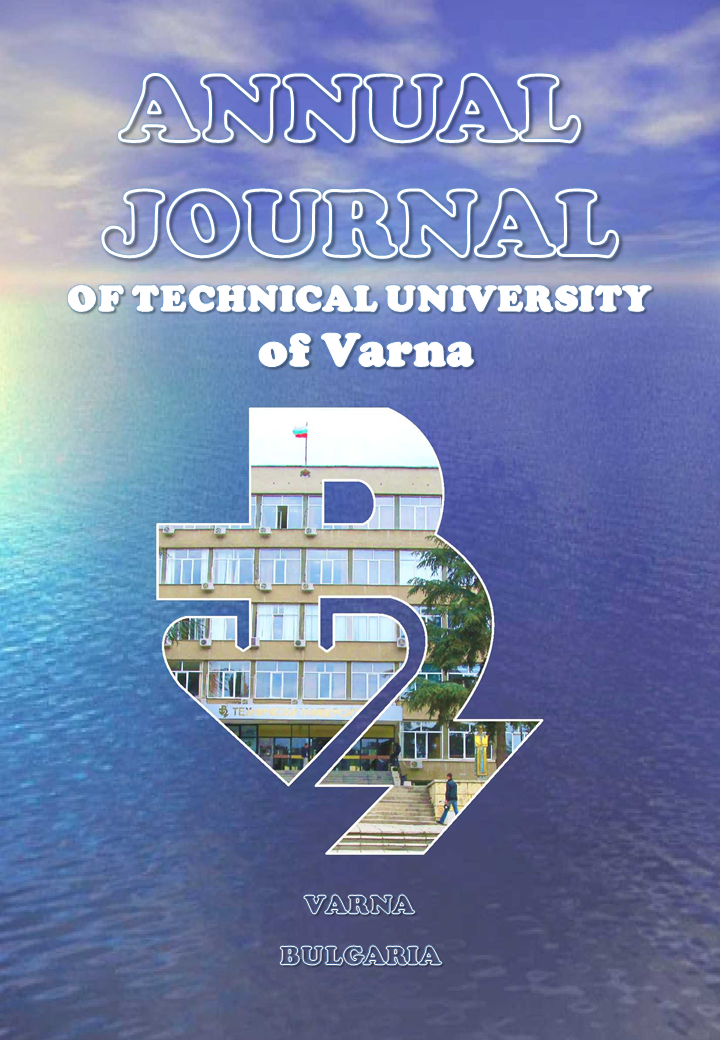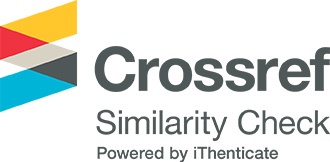A Prototype of Automated Chayote Peeling Machine
##semicolon##
https://doi.org/10.29114/ajtuv.vol6.iss2.285##semicolon##
Chayote##common.commaListSeparator## peeling machine##common.commaListSeparator## prototype##common.commaListSeparator## mechanical engineering##common.commaListSeparator## CADАбстракт
Fruit peeling seems a simple performance, but it is the consist of many elements such as the peeler, the way we grasp and move the blade and cutting speed, etc. - all these factors play a role, and interact with each other. This paper describes the prototype of a chayote peeling machine. The machine has been designed with a simple and low-cost approach. To improve chayote peeling rate and ensure pulp quality, a proposed structure was designed, manufactured and tested in laboratory. The experimental results are examined to demonstrate the efficiency of the peeling machine. It proves that the proposed machine could be widely applied in the fruit peeling technology.
Изтегляния
##submission.citations##
<p>C. Rock, W. Yang, R. Goodrich-Schneider, H. Feng (2012). Conventional and alternative methods for tomato peeling. Food Engineering Reviews, 4, 1-15. <br /><a href="https://doi.org/10.1007/s12393-011-9047-3" target="_blank">Crossref</a></p>
<p>European Union, The Food and Beverage Market Entry Handbook: Vietnam, 2020. <br /><a href="https://doi.org/10.2818/067189" target="_blank">Crossref</a></p>
<p>Fenghe Wang, Yechun Ding, Weijun Xie, Deyong Yang (2019). Design and experimental study of a separating machine for seed and peel of camellia oleifera fruit, IFAC-PapersOnLine, 52 (30), 87-91. <br /><a href="https://doi.org/10.1016/j.ifacol.2019.12.502" target="_blank">Crossref</a></p>
<p>Garcia, E., & Barrett, D. M. (2006). Peelability and yield of processing tomatoes by steam or lye: Peeling of processing tomatoes: Lye and steam. Journal of Food Processing and Preservation, 30(1), 3–14. <br /><a href="https://doi.org/10.1111/j.1745-4549.2005.00042.x" target="_blank">Crossref</a></p>
<p>Health Encyclopedia. Be Careful with Kitchen Knives. <a href="https://www.urmc.rochester.edu/encyclopedia/content.aspx?contenttypeid=1&contentid=263" target="_blank">https://www.urmc.rochester.edu/encyclopedia/content.aspx?contenttypeid=1&contentid=263</a> (Access 01 June 2022)</p>
<p>Henry, A. (n.d.). Why Dull Knives Are More Dangerous in the Kitchen. <br /><a href="https://lifehacker.com/why-dull-knives-are-more-dangerous-in-the-kitchen-5968985" target="_blank">https://lifehacker.com/why-dull-knives-are-more-dangerous-in-the-kitchen-5968985</a> (Access 01 June 2022)</p>
<p>Hosein Nouri-Ahmadabadi, Mahmoud Omid, Seyed Saeid Mohtasebi, Mahmoud Soltani Firouz (2017). Design, development and evaluation of an online grading system for peeled pistachios equipped with machine vision technology and support vector machine, Information Processing in Agriculture, 4 (4), 333-341, <a href="https://doi.org/10.1016/j.inpa.2017.06.002" target="_blank">Crossref</a></p>
<p>Jalal Eskandari, Ali M. Kermani, Shahriar Kouravand, Payam Zarafshan (2018). Design, fabrication, and evaluation a laboratory dry-peeling system for hazelnut using infrared radiation. LWT - Food Science and Technology, 90, 570-576.</p>
<p>Johnson, Greg & Weinberger, Katinka & Wu, Mei. (2008). The Vegetable Sector in Tropical Asia: Vietnam, 2008</p>
<p>Knife News. (2015, September 25). This stubby knife handle thinks you've been holding your kitchen knives all wrong. <a href="https://knifenews.com/fini-cutlery-stubby-knife-handle-thinks-youve-been-holding-your-kitchen-knives-all-wrong/" target="_blank">https://knifenews.com/fini-cutlery-stubby-knife-handle-thinks-youve-been-holding-your-kitchen-knives-all-wrong/</a> (Access 01 June 2022)</p>
<p>Li, X., Zhang, A., Atungulu, G. G., Delwiche, M., Milczarek, R., Wood, D., ... Pan, Z.<br />(2014). Effects of infrared radiation heating on peeling performance and quality attributes of clingstone peaches. LWT - Food Science and Technology, 55(1), 34–42. <br /><a href="https://doi.org/10.1016/j.lwt.2013.08.020" target="_blank">Crossref</a></p>
<p>Nguyen T.M., Le N.T.T., Havukainen J., Hannaway D.B (2018) Pesticide use in vegetable production: A survey of Vietnamese farmers’ knowledge. Plant Protect. Sci., 54, 203–214</p>
<p>Pham Thi Thu Huong, A.P. Everaarts, J.J. Neeteson, P.C. Struik (2013). Vegetable production in the Red River Delta of Vietnam. I. Opportunities and constraints. NJAS - Wageningen Journal of Life Sciences, 67, 27-36, <br /><a href="https://doi.org/10.1016/j.njas.2013.09.002" target="_blank">Crossref</a></p>
<p>Richard T. Stone, Olivia Janusz, & Thomas M (2019). Schnieders Iowa State University. Ergonomic Analysis of An Affordance Tool for Modern Kitchen Knives. Proceedings of the Human Factors and Ergonomics Society 2019 Annual Meeting, 2019.</p>
<p>Shigley, J. E. Shigley's mechanical engineering design. Tata McGraw-Hill Education, 2011</p>
<p>S van Wijk. The market for vegetables in North Vietnam - WUR eDepot.</p>
<p>Truong Tan Quan (2009). Transition From Subsistence Farming to Commercial Agriculture in Quang Binh Province, Vietnam. Lincoln University.</p>
<p>W. Wang, L. Wang, Y. Feng, Y. Pu, T. Ding, X. Ye, et al. (2018). Ultrasound-assisted lye peeling of peach and comparison with conventional methods. Innovative Food Science and Emerging Technologies, 47, 204-213. <br /><a href="https://doi/org/10.1016/j.ifset.2018.02.016" target="_blank">Crossref</a></p>
<p>Xuan Li, Zhongli Pan, Griffiths G. Atungulu, Xia Zheng, Delilah Wood, Michael Delwiche, Tara H. McHugh (2014). Peeling of tomatoes using novel infrared radiation heating technology. Innovative Food Science & Emerging Technologies, 21, 123-130. <br /><a href="https://doi.org/10.1016/j.ifset.2013.10.011" target="_blank">Crossref</a></p>
<p>Yi Shen, Ragab Khir, Delilah Wood, Tara H. McHugh, Zhongli Pan (2020). Pear peeling using infrared radiation heating technology. Innovative Food Science & Emerging Technologies. 65,<br /><a href="https://doi.org/10.1016/j.ifset.2020.102474" target="_blank">Crossref</a></p>
<p>Zhang Zheng, Wang Xiaoxi, MA Sen (2018). Effects of Peeling with Flexible Alloy Blade on Naked Oats. Grain & Oil Science and Technology, 1 (3), 131-137, <a href="https://doi.org/10.3724/SP.J.1447.GOST.2018.18038" target="_blank">Crossref</a></p>
<p>Zee Krstic (2018). Here Are the Kitchen Tools Most Likely to Harm You. <a href="https://www.cookinglight.com/news/what-are-the-most-dangerous-kitchen-items-accidents" target="_blank">https://www.cookinglight.com/news/what-are-the-most-dangerous-kitchen-items-accidents</a> (Access 01 June 2022)</p>
##submission.downloads##
Публикуван
##submission.howToCite##
Брой
Раздел (Секция)
##submission.license##
СПОРАЗУМЕНИЕ ЗА ПУБЛИКУВАНЕ
Годишника на Технически университет - Варна (ГТУВ) цели да гарантира, че постъпващите статии се публикуват, като същевременно се предоставя значителна свобода на публикуващите ги автори. За изпълнение на тази цел, ГТУВ поддържа гъвкава политика относно авторските права, което означава, че няма прехвърляне на авторски права от автора на издателя, а авторите запазват изключително авторско право върху интелектуалното си произведение.
При изпращане на статия, Отговорния автор трябва да се съгласи и приеме правилата и условията за публикуване, изложени в настоящото Споразумение за публикуване, които са както следва:
ПРЕДОСТАВЯНЕ НА ПРАВА ОТ ОТГОВОРНИЯ АВТОР
Отговорния автор предоставя на ГТУВ за времето на пълния срок на авторското право и всяко следващо удължаване или подновяване, следното:
• Неотменимо, неизключително право да публикува, възпроизвежда, предоставя, разпространява или по друг начин използва предоставената работа в електронни и печатни издания и в производни произведения в целия свят, на всички езици и във всички известни съществуващи или в последствие възникнали медии.
• Неотменимо, неизключително право да създава и съхранява електронни архивни копия на работата, включително правото да депозира предоставената работа в дигитални хранилища с отворен достъп.
• Неотменимо, неизключително право на лицензиране на други лица да възпроизвеждат, превеждат, преиздават, предоставят и разпространяват предоставената работа при условие, че авторите са надлежно идентифицирани (за момента това се извършва чрез публикуване на произведението под лиценз Creative Commons Attribution 4.0 Unported).
С предоставянето на работата за публикуване, авторските права върху материала остават на авторите. Авторите запазват всички патентни, търговски марки и/или други права върху интелектуалната си собственост.
ЗАДЪЛЖЕНИЯ НА ОТГОВОРНИЯ АВТОР И СЪАВТОРИТЕ
При последващо разпространение или повторно публикуване на предоставената работа, Отговорния автор се съгласява да идентифицира ГТУВ, в който е публикувано произведението като първоначален източник на първото публикуване на работата. Отговорния автор гарантира, че съавторите също ще посочват ГТУВ като източник на първото публикуване, когато разпространяват, преиздават или се позовават на настоящата работа в бъдещи свои публикации.
ГАРАНЦИИ ОТ СТРАНА НА ОТГОВОРНИЯ АВТОР
Отговорния автор гарантира че предоставената за публикуване работа не нарушава никои действащи нормативни разпоредби или законни права на която и да е трета страна. Същия гарантира че работата не съдържа какъвто и да е материал, който може да се възприеме от читателската аудитория като неетичен, компрометиращ, нехуманен, расистки, клеветнически и/или нарушаващ авторски и/или имуществени права, права на интелектуална собственост или поети ангажименти за поверителност към трети страни. Отговорния автор гарантира че предоставеният материал е с оригинално съдържание, не е официално публикуван в никое друго издателство, както и че не е в процес на публикуване пред други издателства. Отговорния автор също така гарантира че притежава съответните правомощия да сключи настоящото споразумение. Ако предоставяната работа е подготвена съвместно с други съавтори, Отговорния автор гарантира че всички останали съавтори са информирани и са съгласни предоставения материал да бъде публикуван в ГТУВ.
Отговорния автор лично (или от името на авторския колектив) дава съгласието си да не въвлича по никакъв начин ГТУВ като страна в каквито и да било научни, академични, административни и/или съдебни спорове, в случаите на установени нарушения на горепосочените декларации и гаранции.
ПРАВА И ЗАДЪЛЖЕНИЯ НА ГТУВ
ГТУВ се съгласява да публикува предоставения материал, в случаите когато същия отговаря напълно на всички необходими качествени, технически и редакционни изисквания, като го идентифицира еднозначно с авторите му. В следствие на настоящото споразумение, на ГТУВ се предоставя правомощие да упражнява права при необходимост от името на авторите върху трети лица, като например в случаите на установено плагиатство, нарушаване на авторски права и др.
Декларация за поверителност на лични данни
Вашите имена и имейл адреси, въведени в уебсайта на ГТУВ, ще бъдат използвани само и изключително за обявените цели на настоящото списание и няма да бъдат използвани за никакви други цели от издателя или предоставяни на друга - трета страна.
Издателят се задължава да извърши всички необходими действия, цялата предоставена лична информация да остане конфиденциална, в рамките на издателя и да не бъде споделена с външни обекти или субекти, освен ако не е дадено предварително изрично разрешение от собственика на личните данни.
Вашата лична информация няма да бъде обект на продажба, разпространение или публикуване по какъвто и да е начин и под каквато и да е форма.









